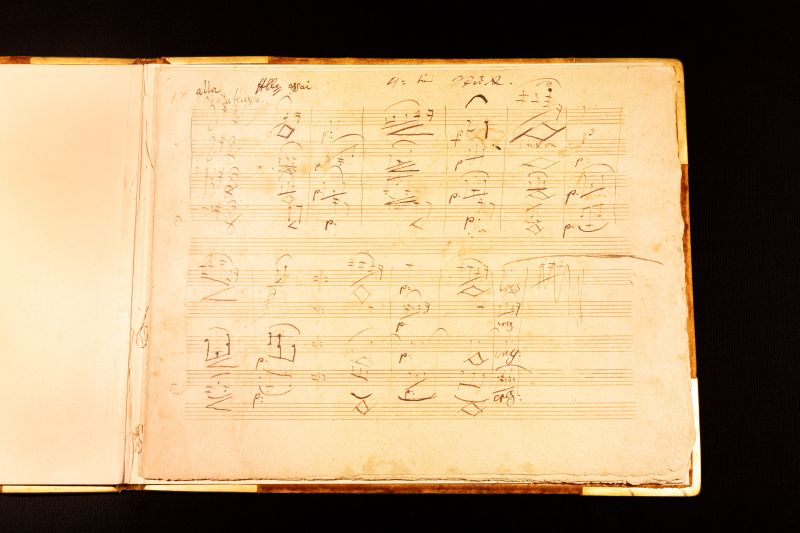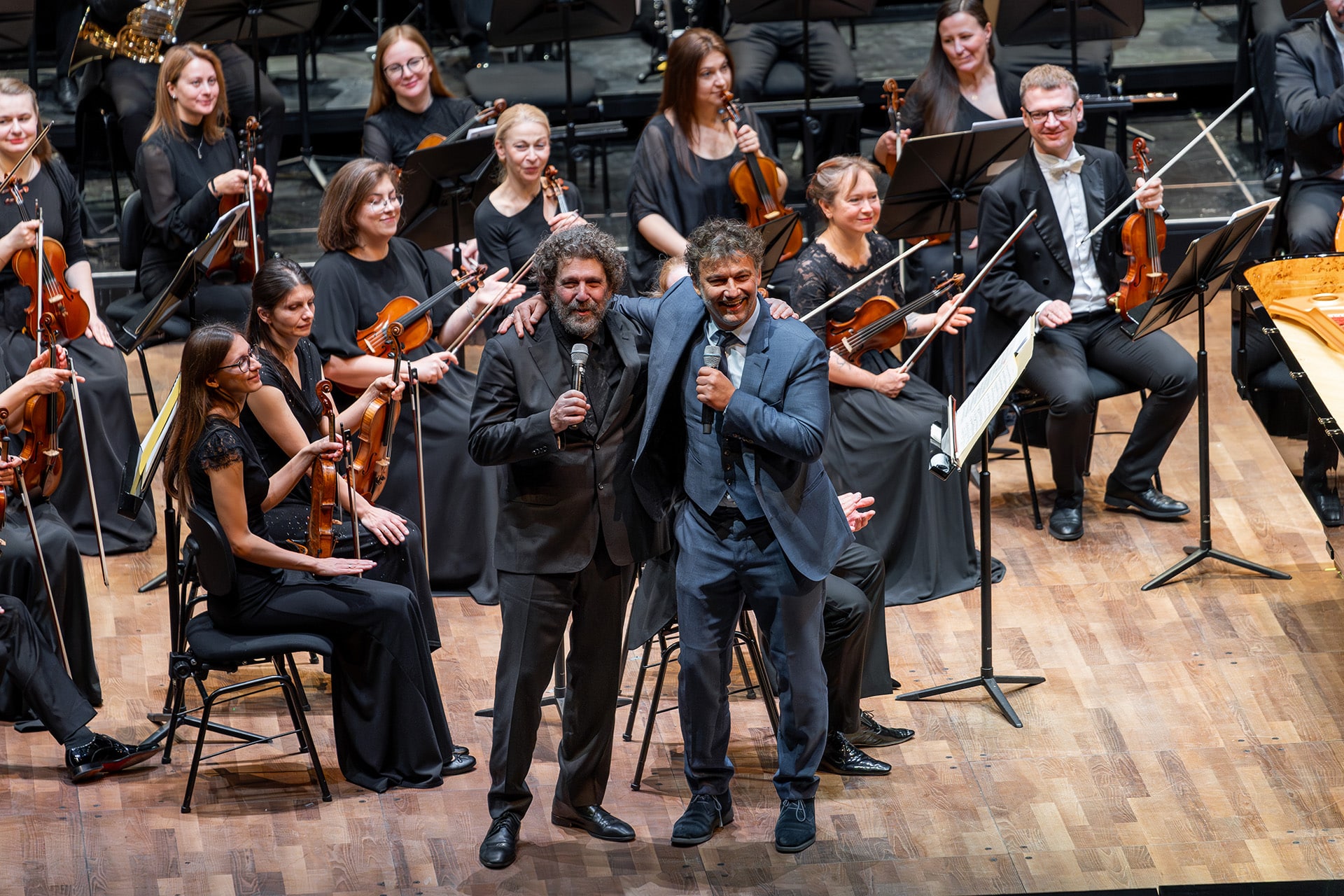Last composer standing – who is really the most performed?
mainThree months ago I kicked off a public conversation here as to which living composers are most likely to last the test of time. You can read the results here.
The discussion, which spread into several languages, prompted soul searching and stock-taking at music publishers. One of the leaders, Boosey & Hawkes, has just sent me a list of works of the past decade that achieved the greatest number of performances.
The top ten are not what I expected. To avoid giving you a quick fix, I’ll start from the foot up.
At number 10 is Karl Jenkins’ Stabat Mater with 57 performances. I once described Jenkins as ‘a newspaper composer’ in the sense that his music is ephemeral, hot today, late tomorrow. It looks like he’s proving me wrong.
At 9, with 59 performances is James MacMillan with O Bone Jesu (2002) for chorus.
At 8, the countdown quickening on 62 performances, it’s Michael Daugherty: Raise the Roof (2003) for timpani and symphonic band (or orchestra).
At 7, Magnus Lindberg has been doing well at the Los Angeles and New York philharmonic orchestras with 67 hearings of Gran Duo (2000) for woodwind and brass.
At 6, it’s Elliott Carter: Dialogues (2003) for piano and large ensemble, played 70 times.
Into the top five now with John Adams: The Dharma at Big Sur (2003) for electric violin and orchestra, 72 concerts.
At 4, a big surprise, 80 performances of Detlev Glanert’s opera, The Three Riddles (2003).
Number 3, an even bigger shock, Glanert’s comic opera Jest, Satire, Irony and Deeper Meaning (2000), seen 83 times. Who would have included Henze’s star pupil as a contender?
At 2, it’s Christopher Rouse, American hero, with Rapture for orchestra (2000), 97 plays.
And the winner is, you’d never have guessed, in the red corner, the Welsh dragon Karl Jenkins with a breath-taking 311 performances of his 2004 Requiem. I owe Mr Jenkins a retraction: his music may still be played when the last newspaper has bitten the dust.
Let’s digest those stats. John Adams, who is Boosey’s top earner, is getting many more performances of earlier and more trenchant works than the slippery Dharma. But where in the list, I wonder, are the prolific Peter Maxwell Davies and the ever-interesting Harrison Birtwistle, both stars of the Boosey stable? Where, above all, is Steve Reich?
It appears from that Reich’s Cello Counterpoint almost made the cut, as did two further works of Adams, On the Transmigration of Souls and the opera Doctor Atomic, along with two concertos by Lindberg and a collection by my Melbourne cobber, Brett Dean.
These are, of course, the results of just one big publisher. Nevertheless, they are indicative of a trend towards the simplistic satisfactions offered by the former ad-man Jenkins, as distinct from the more serious contemplations of post-modern genre leaders.
If other publishers care to send their results to norman@normanlebrecht.com, I will attempt to compile a list of all-time hits of the Noughties. Chester, Universal, Faber, Peters – it’s time to come clean – you’ve got til the weekend. Ades, Glass and Rihm musy be in the running.
Anyone else you think needs to stand up and be counted?





I don’t find much in this, for several reasons. One is that the B&H list appears to be only for works requiring rental of parts. Nary a piano within earshot, nor anything chamberish except Reich.
I take it recordings, broadcasts, downloads, and the like are not included.
The test of time is a romantic notion whose absolutes and cultural assumptions have been seriously questioned, and in my view defeated.
As for Mr. Jenkins, expressions other than those involving newspapers come to mind, none of them complimentary or affected by how often his music appears.
One thing to consider in looking at these stats is how much one or two particular ensembles affect the count for a given piece – so that the work, even if often performed, is not necessarily widely performed.
For instance, how many of the 59 performances of MacMillan’s O bone Jesu (#9, and a terrific piece) have been by The Sixteen? That group commissioned the score and tours with it; I’m guessing its share of the total performances is somewhere between 75 and 90 percent (if not more).
I also wonder if operas should be on a separate list, because sheer logistics keep them from being presented as widely as concert works.
You gotta wonder where In C fits into all this – you can download the score and it works with all sorts of instrument combinations.
I think there were two performance in the LA area last year alone…
Which Clichés are the most clichéd…which hamburgers are most quaffed? Keep up the counting game and we’ll be counting the sheep till the cows come home. Once in a blue moon a piece has more than a century half life. Will Mr. Jenkins’ ear-worms will still be glowing when there are London vineyards and Venice has submerged? He should cherish his newspaper clippings. Newspapers are endangered.
I suspect the reason is more straightforward than a question of taste. Karl Jenkins’ music is performable – and is regularly performed – by amateur groups. The reasons why they like his music are beside the point; the fact is that my local Wednesday night amateur orchestra is never, ever going to be able to tackle Magnus Lindberg or Elliott Carter, however much they might want to. But my local choral society can and does sing Karl Jenkins.
However awful his music, it’s at least within the range of performers other than top-flight professionals. And given that the UK has many hundreds more amateur ensembles than professionals, the results in terms of numbers of performances are almost a foregone conclusion. Far better composers than Jenkins could learn from this. See also the Daugherty -in the amateur wind-band-crazy USA, he’s given himself an immediate advantage.
RB, there’s a great deal of music performable by amateurs and less than top professionals that isn’t Jenkins. There have been many comments over the years about why certain music is or is not heard. Difficulty is not the major reason.
Most performers and performing groups are notoriously uninterested in looking on their own for new music. If there’s but a tiny marketing push, it carries the day, and copycat sociology and economics take over from there.
Norman’s list is interesting. I just find its meaning limited. I’ll be as curious as the next person to see what he uncovers from other publishers.
Paul, that’s true – but honestly, how much of it is really first class? Where are the Lindberg, Dutilleux, Henze, Stockhausen, Birtwistle, Ades, Benjamin, Carter etc etc scores from the last ten years that will be playable by the kind of groups that perform Jenkins? I’m not talking about the NYOGB, or the Kensington Symphony Orchestra, or any of the other few amateur outfits that are of almost professional standard, and who can and do tackle challenging music head-on. I mean the local church choral societies, the small-town amateur orchestras – the groups of whom Tom Service recently (hilariously) said “we know nothing”?
But I take your point about the promotion of new music. Amateur musicians play the music that they like the sound of. I’d guess that the Karl Jenkins boom has been fuelled by massive airplay on Classic FM. How could similar exposure be achieved for – say – some of MacMillan’s, or Ades’ more technically manageable recent efforts? Could it, realistcally?
And even supposing there’s a revolution in public taste and an amateur orchestra is found with the will, the ability and the money (because it’ll decimate their audience, and there’s no state subsidy for amateurs) to play – say – Julian Anderson’s Book of Hours. When they approach the publisher, odds are they’ll be forced to hire parts at punitive rates (many contemporary scores are hire-only; and £800 for an orchestral set could be half of an amateur group’s annual budget), and sent shoddily-produced, heavily-marked performance parts – a few weeks late because only one set exists and, darlings, Simon needed it in Berlin last month!
I think the point still stands that many leading composers are writing almost exclusively for professionals, and that publishers are promoting this music to a heavily subsidised and highly skilled professional sector. And if you want QUANTITY of performances, that’s no way to go.
It’ll be interesting to see the information that Norman gets back from publishers other than Boosey. I’d be willing to bet that the most performed new work of the last 10 years turns out to be tonal, and choral, and available in the public domain (ie for sale, not hire). And it’ll be something that makes everyone who’s really serious about new music groan with dismay. Not my kind of music – but then I work in the business, and that may be the point. We don’t get it!
Rather than taking the list from pieces that are less than 10 years old, I think a more interesting and relevant list would be the number of performances of any works by a living composer. As your Fabers list shows, many of the top 10 from the past 10 years will be there by virtue of a run of dance performances or similar exigencies. If the list is expanded to include all performances by living composers it will include works that have had a little time to bed down into the repertoire and will I think be a lot more fascinating. For example, a quick scan of instantencore.com’s (by no means comprehensive) database shows Golijov’s Last Round (1996) had 80+ performances just since 2008.
A billboard chart of all classical performances – not just contemporary – would also be interesting and instructive if built over time – hopefully in the internet age it will happen sometime.
I must point out that publisher lists are not the best measure for another reason: many professional composers who have numerous performances are not represented by the few surviving large publishing houses. Two of the most performed U.S. composers, Theofanidis and Higdon, actually run their own publishing concerns, and this is an increasing trend among composers of the younger generation.
NL replies: I doubt they produce such high performance numbers, but if they do they are welcome to submit the figures and I’ll incorporate them.
I guess it’s somewhat of a coup to get Herr Glanert’s new opera first in my theater!
NL: You bet! when and where?